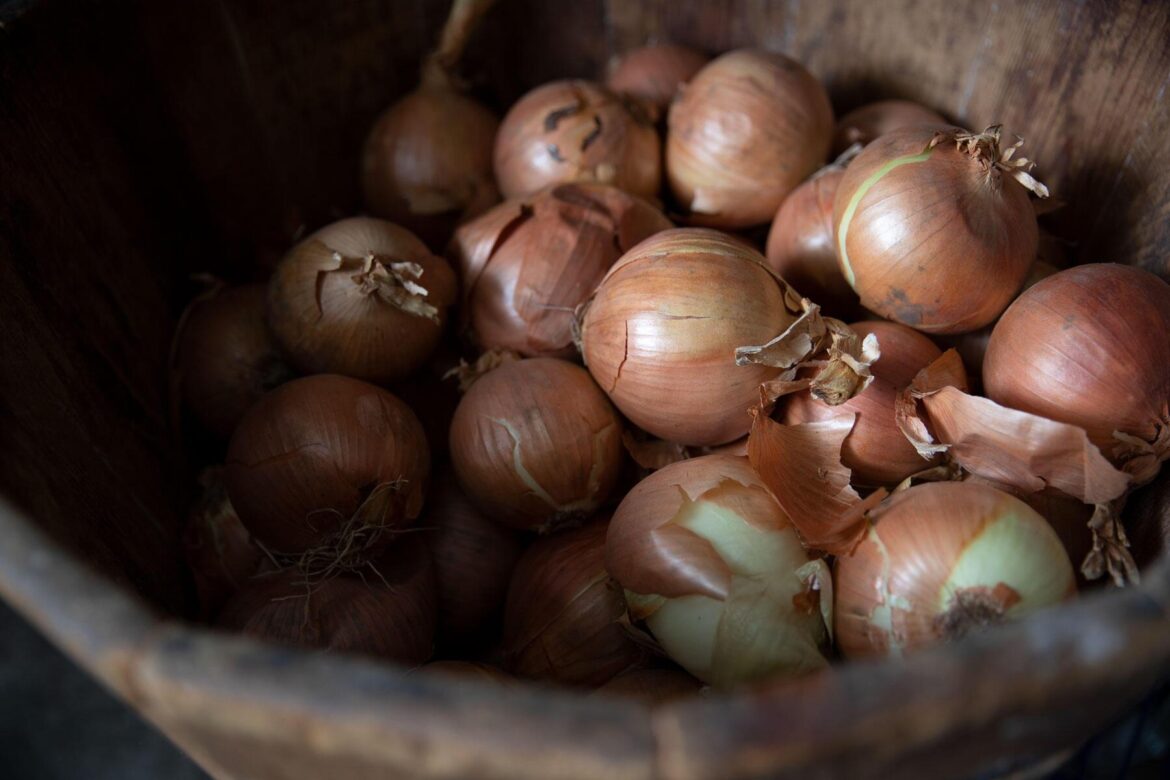CORVALLIS, Ore. — Get onions in the ground in spring and avoid heartbreak at harvest.
Plant as soon as soil is dry enough to work — March and April are prime — said Jim Myers, Baggett‑Frazier Endowed Chair of Vegetable Breeding and Genetics in the Department of Horticulture at Oregon State University.
Most onions grown in Oregon are long-day types. They make green tops until day length reaches about 14 hours, which triggers bulbing. Early planting lets plants size up before bulbing begins — and larger plants make larger bulbs.
“The size of the bulb is dependent on the size of the plant when bulbing begins,” Myers said. “This is why early planting is critical if you want large onions, as well as plenty of water and fertilizer.”
Buy onion sets while firm and dormant. Use larger sets for green onions and smaller sets for bulbing onions. When purchasing transplants, choose plants free of decay or excess drying.
Amend well-drained soil with compost or aged manure. At planting, band a complete fertilizer (for example, 10-10-10) along the row, or use a balanced organic fertilizer.
Planting and spacing
Green onions: Set bulbs 1½ to 2 inches deep and 1 inch apart. Harvest when tops are 8 to 10 inches tall.
Bulbing onions (from sets): Plant about ½ inch deep and 4 inches apart in rows 12 to 15 inches apart.
Transplants: Space 3 to 4 inches apart in rows 12 to 15 inches apart.
Setting onion transplants outside
Harden off transplants for 5–7 days. Plant when soil is workable and not waterlogged. Set plants at, or just slightly above, the original soil line — avoid burying the necks or bending them. Water in gently to settle soil around roots and mulch lightly to conserve moisture.
Water and fertilizer
Fertilize every 2–3 weeks until bulbing starts. Keep soil consistently moist — onions are shallow-rooted and drought triggers early, small bulbs. When tops begin to dry and fall, stop watering so bulbs mature in dry soil. After about half the tops have fallen, wait a week and harvest. Cure bulbs 7–10 days in sun, covering at night.
Regional considerations across Oregon
Western Oregon (Willamette Valley/North Coast)
Plant earlier in the window; soils warm slowly. Use raised beds if drainage is poor. Mulch to moderate late-spring dry spells.
Southern Oregon (Rogue/Umpqua valleys, South Coast)
Heat arrives early — plant on time and maintain steady irrigation and mulching to prevent heat-stress bolting.
Central Oregon (High Desert)
Delay planting until soil can be worked and hard frosts ease. Use row cover for cold snaps; drip irrigation and windbreaks help reduce stress.
Eastern Oregon (Columbia Plateau/Blue Mountains/Basin)
Cold nights and big swings favor steady moisture and weed control; choose well-drained sites and avoid frost pockets.
Oregon Coast (North/South Coast)
Cool, damp springs call for sharp drainage and good air flow; consider raised beds and wider spacing to reduce disease pressure.
Varieties that perform well in Oregon
Yellow: Allium cepa ‘Copra’, ‘New York Early’, ‘Candy’
Overwintering: A. cepa ‘Walla Walla’
Red: A. cepa ‘Red Wing’.
White: A. cepa ‘White Sweet Spanish’, ‘Superstar’
Green bunching: Allium fistulosum ‘Ishikura’, ‘He-shi-ko’
Previously titled No need for tears if you plant onions soon


Comments are closed.